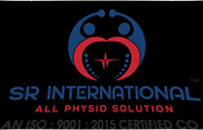Hospital FurniturePresenting our innovative Hospital Furniture, which includes a range of outstanding products that are prime for any hospital or medical facility. Our unparalleled collection of hospital furniture includes the Pediatric CP Walker, 7.5 Feet Mild Steel Examination Table And Bed, MS Exercise Equipment Standing Frame, 3 Fold Traction Table, and Mild Steel Physiotherapy Suspension Bed. Each product is designed to provide top-notch comfort and support to patients, making their hospital stay as comfortable as possible. Our hospital furniture is a must-have for any medical facility, as it offers numerous advantages and features. Firstly, our products are made of high-quality materials, ensuring durability and longevity. Secondly, they are designed to provide maximum comfort and support to patients, aiding in their recovery process. Thirdly, our hospital furniture is easy to clean and maintain, ensuring a hygienic environment for patients. Fourthly, our products are designed to be user-friendly, making it easy for medical professionals to use them. Lastly, our new release of hospital furniture is designed to meet the latest industry standards, ensuring that our products are up-to-date and relevant. With over 2.0 years of experience in the industry, we have established ourselves as a leading manufacturer and supplier of hospital furniture in the domestic market. Our supply ability in All India makes it easy for medical facilities across the country to access our products. |
|
|
|
|
Thank You!
Thank You for your valuable time. We have received your details and will get back to you shortly.
Our Products


Developed and Managed by Infocom Network Private Limited.


For an immediate response, please call this
number 07971258299

Price:


 Send Inquiry
Send Inquiry Send SMS
Send SMS